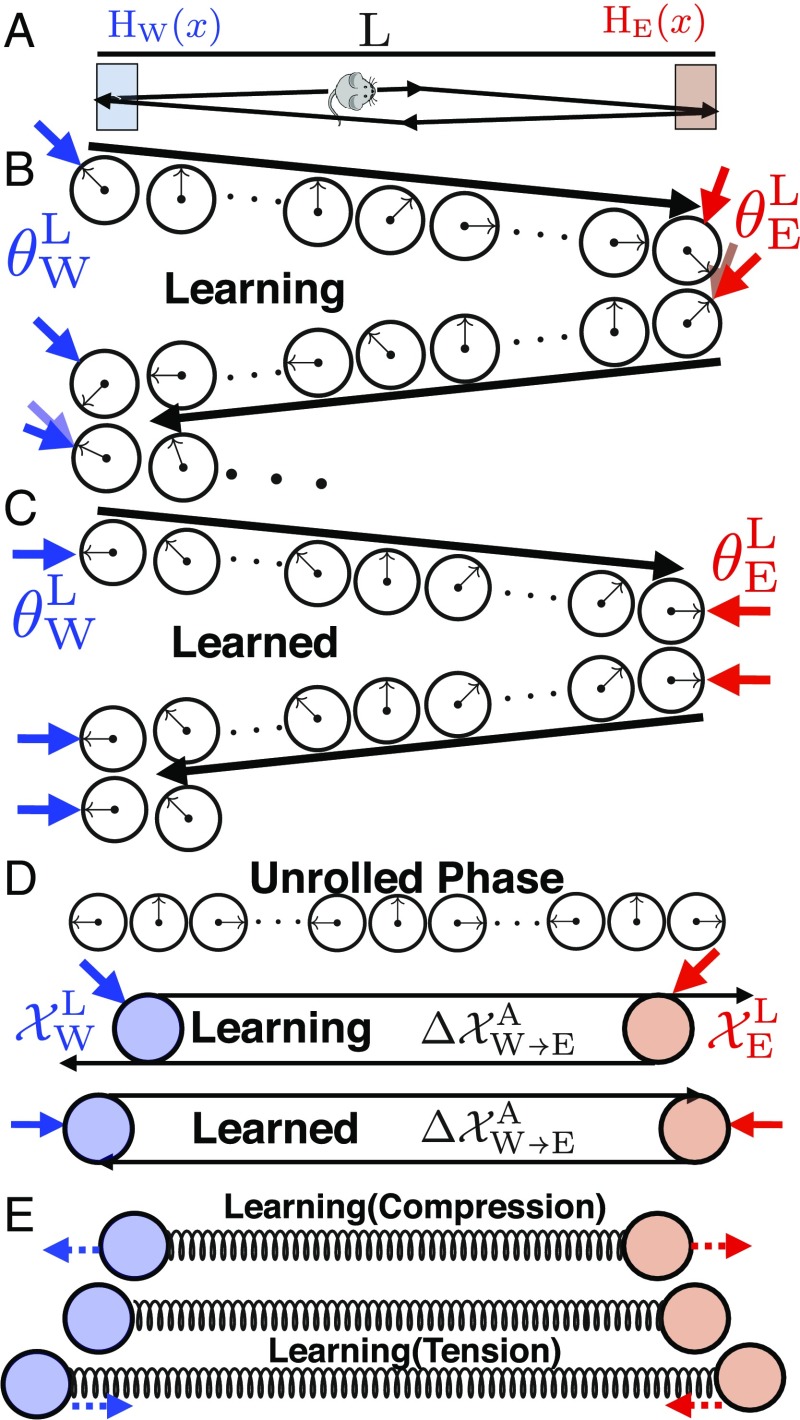Fig. 4.
(A) An animal moving between two landmarks at the edges of a 1D track. (B) A single cycle of exploration as the animal moves from the west to the east wall and back. When the animal encounters the west (east) wall, the attractor phase (black arrow) is pinned to the associated landmark pinning phase (blue/red arrow for west/east wall). As the animal moves from one wall to the other, the attractor phase advances from this pinned phase due to path integration. During learning, the pinning phase from any one wall, plus the phase advance due to path integration, will not equal the pinning phase of the other wall. However, plasticity will adjust the pinning phase of each wall to reduce this discrepancy (motion of red and blue arrows). During this inconsistent prelearned state, the attractor phase at any interior position will depend on path history. (C) After learning, the pinning phase from any one wall, plus the phase advance due to path integration, equals the pinning phase of the other wall, yielding a consistent internal representation of space in which the attractor phase assigned to any interior point becomes independent of path history. (D) We can “unroll” the attractor and landmark phases into linear position variables. Thus, landmark cell synapses can be thought of as points in physical space (blue and red circles). (D, Top) If the phase advance due to path integration exceeds the phase difference between the pinning phases of the landmarks, then the distance between the landmark cells in unrolled phase is closer than the physical distance between the firing fields of the landmarks. (D, Bottom) Plasticity then exerts an outward force pushing the two landmark cells farther apart until their separation in unrolled phase equals the physical distance between their firing fields. (E) In general, the changing positions in unrolled phase associated with landmark cell synapses due to synaptic plasticity can be described by a damped spring-like interaction as in Eqs. 8 and 9. If the separation between the two landmark cell synapses in unrolled phase is smaller (larger) than the physical separation between their firing fields, then the spring will be compressed (extended), yielding an outward (inward) force. This force will move the positions associated with landmark cell synapses until their separation in unrolled phase equals the rest length of the spring, which in turn equals the physical separation between landmark firing fields.

